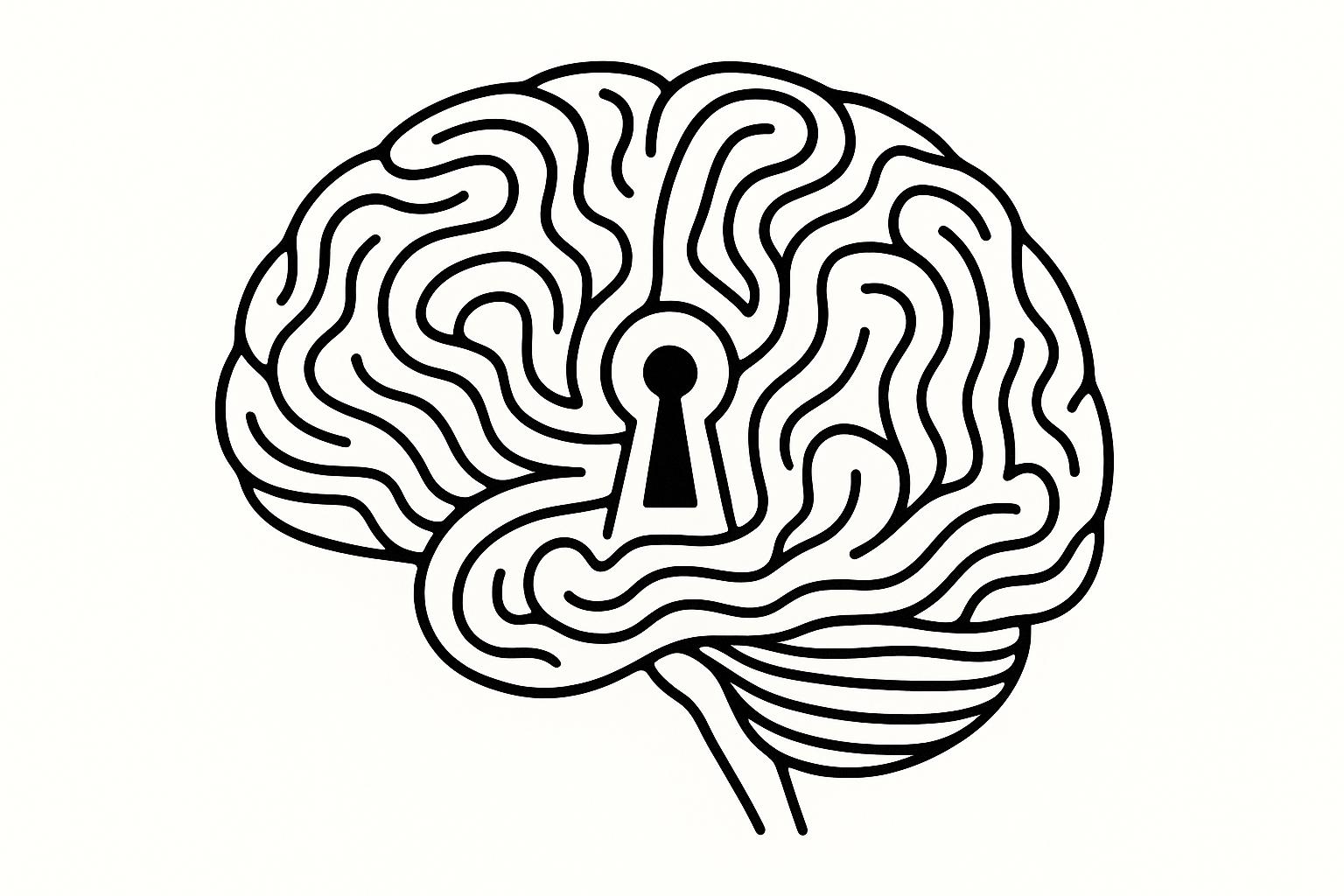
Creating impactful content about depression requires balancing SEO with empathy. Here's how:
Depression affects 280 million people globally - your content can make a difference when done right.
Quick Tip: Start with user-friendly keywords, ensure accuracy, and prioritize empathy in every sentence.
Choosing the right keywords for depression-related content is more complex than standard SEO practices. Mental disorders contribute to 32% of years lived with disability worldwide, making it crucial to strike a balance between visibility and ethical responsibility.
Creating content that resonates with both professionals and those seeking help requires careful language choices. Research highlights how using everyday terms can encourage help-seeking behavior and reduce stigma. Here’s a quick comparison of clinical terms and their more accessible alternatives:
| Clinical Term | Preferred Alternative | Reasoning |
|---|---|---|
| Major Depressive Disorder | Depression | More commonly searched |
| Suicidal Ideation | Thoughts of suicide | Less clinical, more relatable |
| Comorbid Conditions | Related health issues | Easier to understand |
| Cognitive Behavioral Therapy | CBT or talk therapy | Recognizable and approachable |
Balancing clinical accuracy with accessibility is essential to ensure content connects with diverse audiences, paving the way for ethical mental health content creation.
When using AI-generated keywords for depression-related topics, adhering to strict ethical guidelines is non-negotiable. With over 38% of mental health keywords now originating from AI-generated content on Google, it’s vital to align keyword strategies with real user search behavior.
"Quality problems occur typically not because of failure of goodwill, knowledge, effort or resources devoted to health care, but because of fundamental shortcomings in the ways care is organized".
Here are key principles to guide responsible keyword selection:
Language Sensitivity
Content Verification
The mental health field demands meticulous attention to quality, especially since only 5% of over 500 measures for monitoring care quality are used in major reporting programs. Following these guidelines ensures keyword strategies remain both effective and sensitive, complementing broader SEO efforts.
As Melissa Doman, M.A., a workplace mental health expert, emphasizes, “Putting an emphasis on using language accurately around mental health in the workplace is critical in creating psychological safety around discussing the topic”. These principles set the groundwork for evaluating keyword success metrics in the next section.
ChatGPT employs a structured approach to keyword generation, carefully balancing the need for SEO effectiveness with sensitivity to mental health topics.
A well-crafted prompt includes four key components, each serving a specific purpose:
| Component | Purpose | Example for Depression Keywords |
|---|---|---|
| Role | Establishes context | Mental health content specialist |
| Task | Defines the objective | Generate keywords for depression awareness |
| Requirements | Sets specific parameters | Include both clinical and everyday terms |
| Instructions | Provides clear guidelines | Use person-first language and avoid stigmatizing terms |
For example, when generating keywords related to depression, a prompt might look like this:
"You are a mental health content specialist (role) tasked with generating keywords for an article about depression symptoms (task). The keywords should be accessible to a general audience (requirements). Use person-centered language and include emergency resource terms (instructions)."
This structured approach ensures the keywords align with search intent while remaining sensitive to the topic.
By combining structured prompts with an understanding of user intent, ChatGPT enhances the relevance of generated keywords. Using natural language processing (NLP), it captures the nuances of mental health terminology and search behavior.
To improve keyword precision:
| Search Intent | Keyword Example | Content Type |
|---|---|---|
| Informational | "what is postpartum depression" | Educational articles |
| Navigational | "depression hotline near me" | Resource directories |
| Transactional | "online depression screening test" | Interactive tools |
Given that an estimated 280 million people globally are affected by depression, it’s critical to create content that is not only accurate but also sensitive and supportive. This method helps bridge the gap between SEO goals and responsible mental health communication.
Building on the earlier discussion about ethical keyword selection, let's explore how to refine keyword integration for content focused on depression. With Google handling over 1 billion health-related searches daily, maintaining a natural balance in keyword usage is critical.
For depression-related content, a keyword density of around 1-2% is generally recommended. This means primary keywords should appear about once or twice every 100 words. Since healthcare websites fall under the "Your Money or Your Life" (YMYL) category, it's essential to implement keywords with precision and care. Following these density guidelines ensures the content remains both effective and sensitive to the subject matter.
Filtering keywords involves aligning them with user intent and adhering to clinical standards. It's worth noting that hospitals allocate 85% of their budgets to paid digital advertising, and 94% of healthcare patients rely on online reviews when choosing providers. These statistics underscore the importance of thoughtful and strategic keyword selection.
When filtering keywords, keep these points in mind:
Tools like ChatGPT can assist in this process by identifying semantic relationships between keywords and helping to avoid language that could be harmful or stigmatizing.
Once you've compiled a list of depression-related keywords, it's crucial to assess them for both their effectiveness and their ethical implications. This section focuses on refining keyword choices to avoid stigmatizing language and to include crisis support resources.
The words we choose can greatly influence how people view mental health and whether they feel encouraged to seek help. Research shows that even healthcare professionals' decisions can be shaped by stigmatizing language.
Here's a guideline for reviewing and improving keywords:
| Avoid | Use | Why It Matters |
|---|---|---|
| Depressed person | Person with depression | Focuses on the individual, not just their condition |
| Suffers from depression | Lives with depression | Avoids framing the person as a victim |
| Committed suicide | Died by suicide | Removes the implication of criminality |
| Treatment-resistant | Has not found effective treatment yet | Offers a message of hope and possibility |
Tools like ChatGPT can help identify problematic language patterns in keyword clusters and suggest alternatives that are more person-centered. The National Institute on Drug Abuse highlights the importance of language in shaping perceptions, especially in digital spaces where content can reach wide audiences.
Once the language is refined, the next step is to ensure that crisis support is seamlessly integrated into your content.
When creating content around depression, it's essential to include keywords related to crisis support. Following the latest guidelines, these keywords should lead users to accessible and up-to-date crisis resources.
Key tips for implementing emergency keywords:
Creating ethical, user-first content about depression means keeping an eye on both SEO performance and user engagement. By doing this, you can confirm that your keyword strategy is effective while staying sensitive to mental health topics.
To gauge success, tools like Google Analytics and Google Search Console provide key performance indicators (KPIs) that help measure how well your content is performing:
| Metric | Target Range | Why It Matters |
|---|---|---|
| Organic Click-Through Rate | 15–25% | Shows how relevant your content is to users' search intent |
| Average Session Length | 3–5 minutes | Indicates how engaging and valuable users find your content |
| Bounce Rate | Below 55% | Reflects how well your content meets user needs |
| Pages per Session | 2–3 pages | Suggests users are exploring your site further |
These metrics not only help evaluate your content's impact but also lay the groundwork for comparing AI-driven keyword strategies with traditional methods.
A significant 86% of professionals report improved outcomes when using AI for SEO strategies. Here's how AI-generated keywords stack up against manually selected ones:
| Aspect | AI-Generated Keywords | Manual Keywords |
|---|---|---|
| Search Intent Match | 70% unknown intent | Categorized by traditional intent |
| Query Length | Average of 23 words | Average of 4.2 words |
| Keyword Discovery | Real-time analysis | Based on manual research |
"AI isn't here to replace traditional SEO; it's here to enhance it. The key is to start experimenting, stay informed, and always prioritize delivering value to your audience".
To ensure your content is effective, track these metrics to verify that it:
Interestingly, non-branded keywords experienced a 20% drop in click-through rates (CTR), emphasizing the importance of strategic keyword optimization. Regular audits through Google Search Console can help you make data-driven adjustments based on user behavior and engagement trends.
To refine your strategy based on the keyword techniques and safety measures discussed, consider these actionable steps:
| Action Step | Implementation | Expected Outcome |
|---|---|---|
| Keyword Generation | Use ChatGPT to brainstorm seed keywords with a natural density of 1–2% | Better search visibility while maintaining readability |
| Content Safety | Adopt person-first language and eliminate stigmatizing terms | Boosted credibility and stronger user trust |
| Performance Tracking | Use analytics tools to monitor engagement metrics | Insights for optimizing content performance |
These steps summarize the key takeaways, ensuring your content on depression is both effective and compassionate.
When using ChatGPT for keyword research, it’s essential to strike a balance between SEO effectiveness and ethical responsibility. In 2022, an estimated 59.3 million U.S. adults (23.1%) experienced mental illness, highlighting the importance of creating content that is accessible and empathetic.
To write content about depression that is both optimized for search engines and considerate of readers' experiences, it's crucial to use respectful, person-first language. For example, refer to "people living with depression" rather than labeling individuals as "depressives." This thoughtful phrasing not only conveys empathy but also allows you to naturally include relevant keywords, aligning with SEO best practices.
Focus on creating high-quality, audience-centered content by addressing real concerns, providing practical advice, and using language that feels supportive and relatable. Including personal stories or meaningful insights can foster trust and engagement, which benefits both your readers and your SEO efforts. By balancing compassion with optimization, your content can reach and resonate with those searching for help.
To create meaningful and considerate keywords for mental health content using ChatGPT, start by designing thoughtful and specific prompts that capture the nuances of mental health discussions. For instance, you could ask, "Generate keywords related to managing anxiety in everyday life" to steer the AI toward producing focused and compassionate suggestions.
After generating keywords, take the time to review and adjust them for accuracy and sensitivity. This step is crucial to ensure your language resonates with your audience while avoiding terms that might unintentionally perpetuate stigma. Incorporating feedback and refining based on tone and relevance can make a big difference in how your content is received.
Also, stay current with ethical practices in mental health communication. Regularly updating your keyword strategies to reflect new trends and audience preferences will help keep your content both effective and respectful.
Using person-first language in mental health discussions puts the individual before their condition, emphasizing their humanity and showing respect. This way of communicating helps reduce stigma and ensures people feel acknowledged and valued, creating a more compassionate and understanding conversation around mental health.
It also improves how audiences connect with the content by fostering trust and empathy. When the focus is on dignity and respect, the message resonates more deeply, encouraging meaningful connections and open dialogue. By embracing this approach, content creators can cultivate a supportive atmosphere that promotes understanding and engagement.





